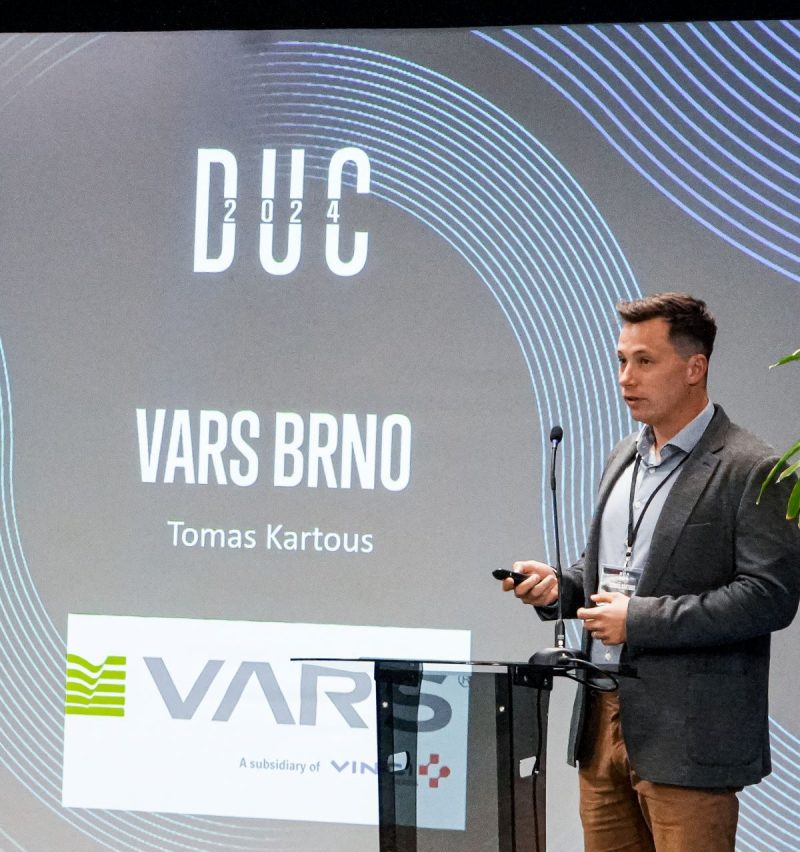
- en
- cs
From the NDIC to the car's navigation system. How information about closures "travels"
How does the information about the closure – as well as that about the actual accident – get into the dynamic navigation systems in the cars? The information system from VARS, used by the National Traffic Information Centre, plays a crucial role. Even so, its staff still have to do the grunt work. See how the information “travels” from the official to the people on the roads.

News
02 July 2024From the NDIC to the car’s navigation system. How information about closures “travels”
The first 5,775 lane-kilometres of measured roads and 1,344 lane-kilometres of motorways have been measured by the CleveRA Car from VARS BRNO in the 2023 season.
How does the information about the closure – as well as that about the actual accident – get into the dynamic navigation systems in the cars? The information system from VARS, used by the National Traffic Information Centre, plays a crucial role. Even so, its staff still have to do the grunt work. See how the information “travels” from the official to the people on the roads.
5465. This is the number of “closures” that have passed through the information system that VARS created in 2008 for the Road and Motorway Directorate and the National Transport Information Centre, which it operates, between the beginning of the year and the end of June. Each piece of information is an invaluable aid to drivers and even emergency workers.
“Our system is a kind of crossroads, which on the one hand collects information from those who approve closures, and on the other hand distributes this information to all those who are interested. There are currently more than 100 such entities,” explains David Novák, Technical Director of VARS BRNO. The average driver most often uses information in dynamic navigation systems such as Waze, Mapy.cz or Google Navigation. “We often encounter the perception that the data in these navigations comes from smartphone movement data, or is obtained in a community manner – i.e. by a driver reporting the closure. But the core information that makes people comfortable travelling comes from NDIC and always flows through our system,” David Novák points out.

Once the data is in the system, its path to the users is absolutely reliable. It’s just that someone always needs to enter the information at the beginning. And it also has to be verified before it can be published. This is where the indispensable role of the dispatchers of the National Transport Information Centre itself comes in.
“If there is a decision on a closure, the official is obliged to enter it into the central closure register. This data sentence comes to us in the form of an event and we then verify with the contractor, usually a construction company, that the construction will actually start as planned,” says Ctirad Weissmann, the head of the NDIC, describing the tedious work of the dispatchers. In fact, it is a daily job for two people – a total of 1.5 full-time jobs. “We mainly check the start time to the nearest hour, or whether there has been any change, for example in the width arrangement. Once we have the information confirmed, we authorise the event and it goes out through all channels,” Weissmann describes.

The number of such events per year is in the high thousands, with most of the work landing on the table of the “summoners” in the spring as the construction season gets underway. “Usually, contracts start to be competed before spring, with the biggest increase coming in the first spring months,” confirms Hana Klusáková, head of the software solutions support department at VARS BRNO. This year, for example, there were 1,210 active events, or closures, at the start of the construction season – as of 1 April. A month later, it was already 2,760 events, and in the second week of June it exceeded 5,000. Incidentally, if you include data on individual events such as accidents, traffic jams or road maintenance, around 1,500 pieces of information pass through the VARS system every day. All of them have to be verified and authorised.
So where does the information go? The list of recipients who receive the data includes more than 100 items. “Firstly, they go to our website dopravniinfo.cz, to the Green Wave of Czech Radio, to dynamic navigation for mobile phones, to the integrated rescue system and to the police,” says Weissmann. “These are the most visible channels, but all the data comes from the distribution interface, where anyone can take it in XML or DATEX format,” the NDIC chief points out. It is from here that the information goes to all types of mobile navigation, assistance services, carriers, but also to the cities, counties and municipalities that manage the communications, in addition to the aforementioned channels. Individuals can also subscribe. Subscribers to the data include universities, which use it in a variety of research. “By default, the data is updated every three minutes, or at any time via a push notification to the user,” adds Weissmann. And by the way – all information is provided free of charge by the Directorate of Roads and Motorways via the NDIC.
VARS BRNO created the system for NDIC in 2008 and provides its continuous support. “This support is provided in a 24/7 mode, with ten employees on our side,” says VARS BRNO Support Manager Hana Klusáková. The support also includes applications for external users – including those for managing closures.
So, can it happen that some information is missing from the database, or on the contrary, remains in it, even if the closure has already ended? The answer is yes. But undoubtedly this will not be the fault of the system itself. “Errors can only be caused by the human factor. As part of the decision to close, the person responsible is obliged to give us information if there is a change, for example if the closure ends early. This is an obligation, but we do not have the tools to enforce it. So it may be that in some cases the information is not up to date. But that’s why we have a team here that tries to verify everything,” concludes Weissmann.
Read more
NEWS




